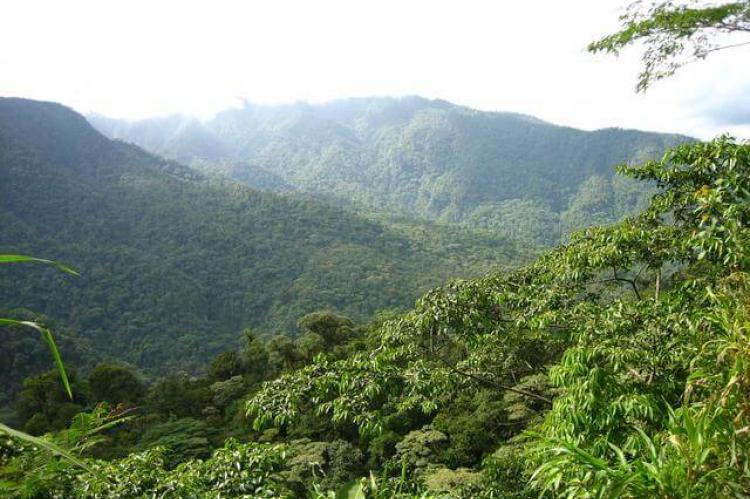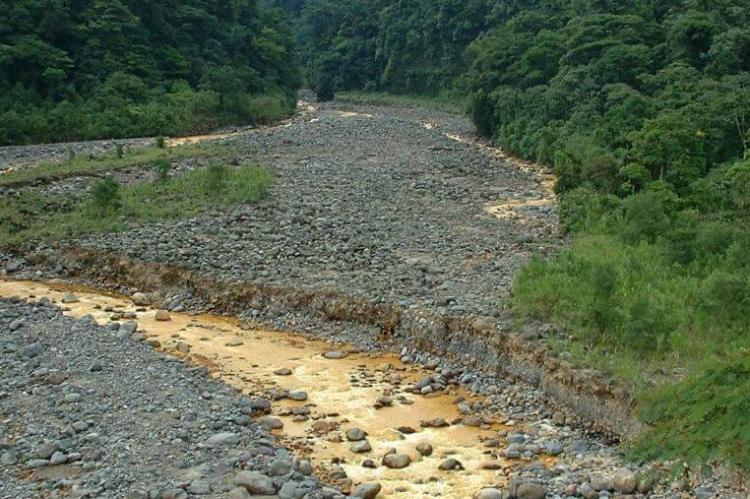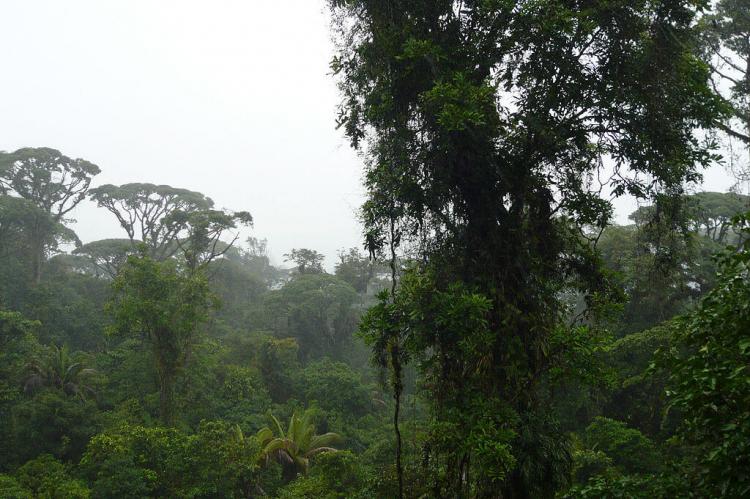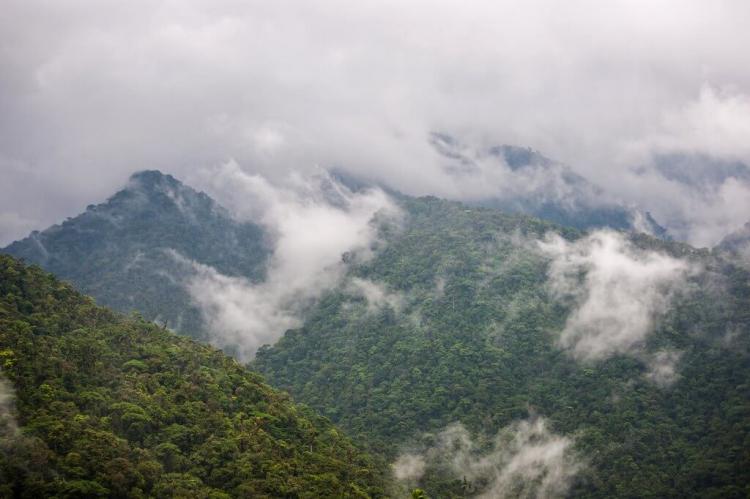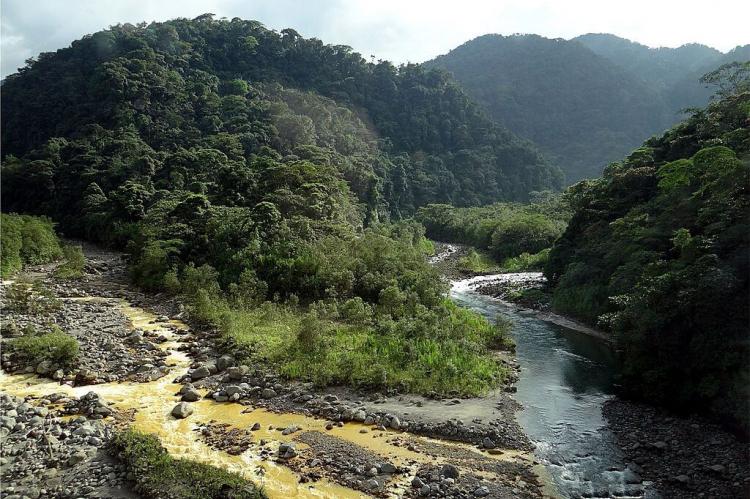Braulio Carrillo National Park: A Verdant Gem in Costa Rica's Central Highlands
Braulio Carrillo National Park is a vast protected area in the Cordillera Central range of central Costa Rica. It showcases its commitment to preserving its natural heritage. This vast park, one of the largest in Costa Rica, boasts the Barva Volcano and several dormant volcanoes.
Braulio Carrillo National Park: A Verdant Gem in Costa Rica's Central Highlands
Nestled within the volcanic Cordillera Central mountain range of central Costa Rica, Braulio Carrillo National Park is a verdant gem, a testament to the country's unwavering commitment to preserving its natural heritage. Spanning an impressive 475,890 hectares (117,572 acres), this vast protected area is one of the largest in Costa Rica, offering visitors a chance to immerse themselves in a world of unparalleled biodiversity and breathtaking landscapes.
Establishment and History
A Legacy of Conservation
Braulio Carrillo National Park was established in 1978, following an agreement with environmental lobbyists to limit and prevent the area's development after the construction of the Limon Highway, which bisects the park from northwest to southeast. The park was named in honor of former Costa Rican president Braulio Carrillo, whose administration had played a pivotal role in fostering the nation's early agricultural economy and building the first road linking San José to the Caribbean coast.
Braulio Carrillo National Park is one of the four national parks in the Cordillera Volcánica Central Biosphere Reserve. It is a designated UNESCO biosphere reserve recognized for its exceptional biodiversity and conservation efforts.
Geographical Divisions
The park is divided into three main sectors: Zurquí, Quebrada Gonzales, and Barva. Each offers its unique attractions and features.
Zurquí Sector
The Zurquí sector is situated in the park's northwestern region and is known for its lush, verdant landscapes and rich biodiversity. This area is home to the Zurquí Biological Station, a research facility that serves as a base for scientific studies and environmental education programs. Visitors can explore well-maintained trails that wind through primary and secondary forests, offering opportunities to spot various bird species, including the elusive quetzal.
Quebrada Gonzales Sector
The Quebrada Gonzales sector lies in the central part of the park and is characterized by its rugged terrain and steep canyons carved by the Hondura River. This area is a haven for adventurous hikers and nature enthusiasts, with challenging trails that traverse through dense forests and offer stunning vistas of the surrounding mountains and valleys.
Barva Sector
The Barva sector, located in the southeastern region of the park, is perhaps the most geologically fascinating area. It is home to the Barva Volcano, one of the park's most prominent features, and three picturesque crater lakes: Barva, Danta, and Copey. This sector also boasts diverse ecosystems, ranging from lush cloud forests at higher elevations to tropical rainforests in the lower reaches.
Geological Wonders
Volcanoes and Craters
Braulio Carrillo National Park is home to many notable geological features, including the Barva Volcano and several dormant volcanoes, such as Cerro Chompipe, Cerro Cacho Negro, and Cerros las Tres Marias. The Barva sector boasts three picturesque crater lakes: Barva, Danta, and Copey, adding to the park's scenic beauty.
Rivers and Canyons
Located in one of the areas with the steepest topography in the country, the park's landscape is characterized by densely forested high mountains, including the Barva and Cacho Negro volcanoes, as well as deep canyons forged by several rivers. These rivers and streams play a vital role in producing hydroelectric power, underscoring the park's importance in sustaining Costa Rica's commitment to renewable energy.
Watershed Protection
Braulio Carrillo National Park also protects essential areas of the Sarapiquí River watershed and other rivers such as the Hondura River, Patria River, and the mineral-colored Súcio River.
Biodiversity Hotspot
Diverse Ecosystems
More than 90% of the park is covered in primary forest, encompassing diverse ecosystems, from the Talamancan montane forests at high elevations to the Isthmian-Atlantic moist forests in the lowlands.
Flora and Fauna
Braulio Carrillo National Park boasts one of the highest levels of biodiversity in Costa Rica, with over 600 identified species of trees, more than 530 species of birds, and 135 species of mammals cataloged. The area near Barva is home to the elusive frog Pristimantis altae and the venomous bushmaster snake. Other notable avian residents include the solitary eagle, the bare-necked umbrellabird, and several species of hummingbirds.
Visitor Experience
A Wilderness Oasis
Unlike some of Costa Rica's more famous national parks, such as Poás Volcano National Park and Manuel Antonio National Park, Braulio Carrillo National Park offers a more rugged and untraveled experience, with relatively unmaintained trails and a sense of true wilderness.
Facilities and Trails
Three main ranger stations serve the park, with two of them, Quebrada Gonzales and Barva, providing visitors with basic facilities such as sanitary services and drinking water. Although several hiking trails are available, they can be narrow and are not regularly monitored by park rangers, adding to the park's adventurous appeal.
Climatic Diversity
Due to the large altitudinal gradient spanning the park, annual precipitation varies significantly, ranging from 2,500 mm (98 inches) on the slopes overlooking the Central Valley to a staggering 5,734 mm (225 inches) on the Caribbean slope. Temperatures also fluctuate, with minimums of 3°C (37.4°F) and maximums of 24°C (75°F), further contributing to the park's diverse array of microclimates and habitats.
Conclusion
Braulio Carrillo National Park is a true jewel in Costa Rica's crown, a place where the forces of nature converge to create a tapestry of exceptional beauty and biodiversity. From its towering volcanoes and pristine crater lakes to its vast tracts of primary forest teeming with life, this park offers visitors an unparalleled opportunity to connect with the natural world and experience the wonders of Costa Rica's rich ecological heritage.
